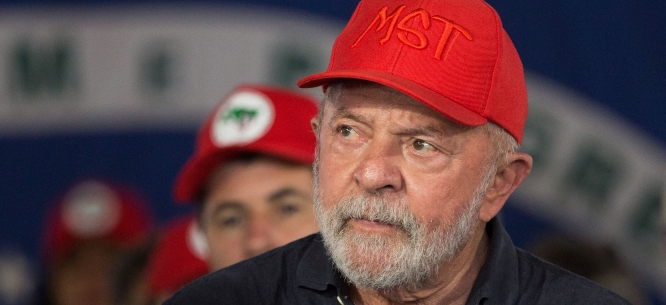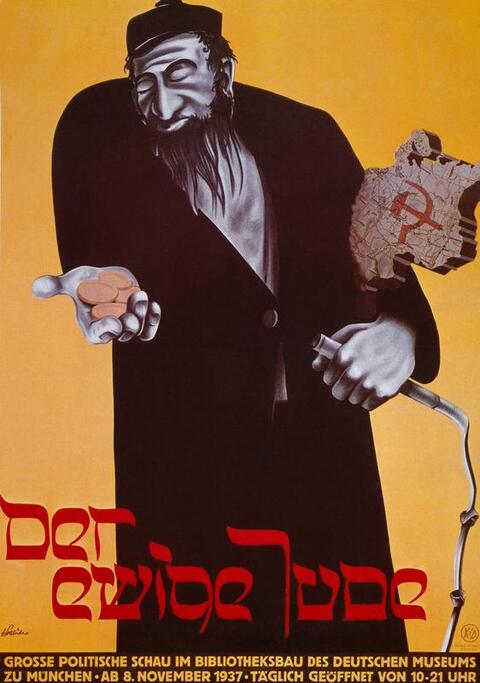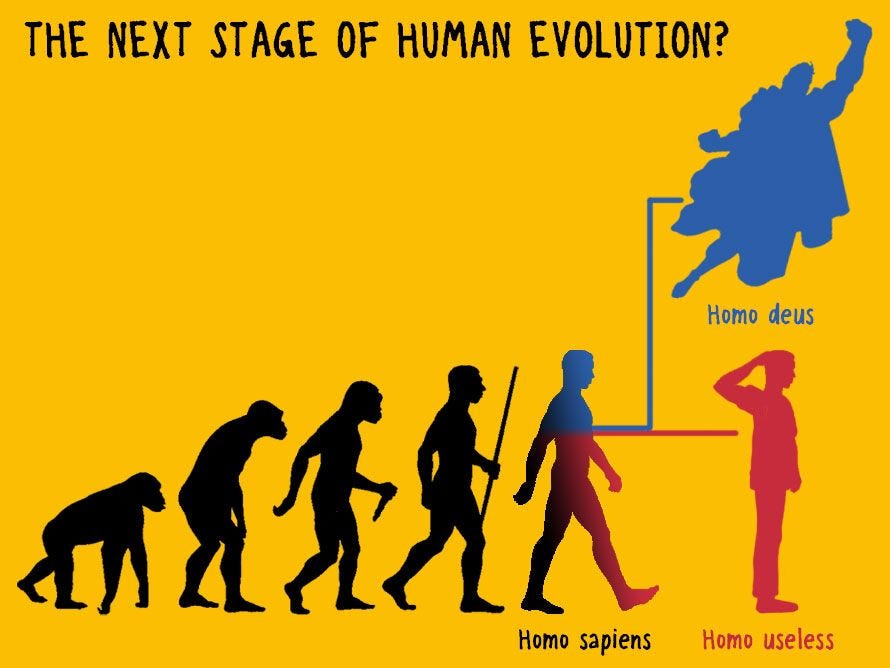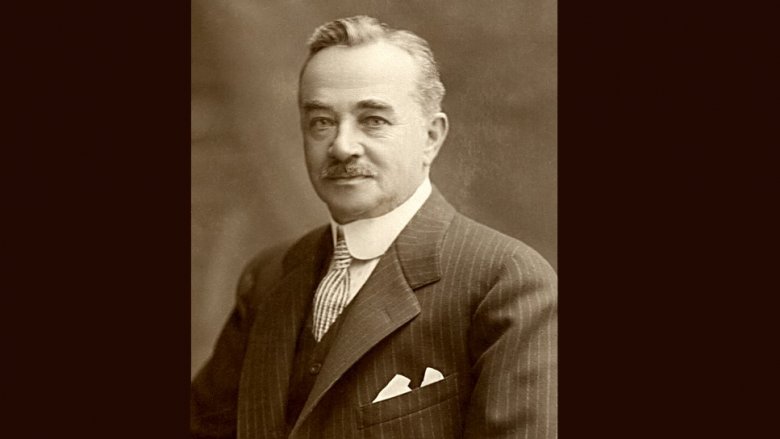A striking paradox of the history of the left is that it is full of self-defeat. From the bitter divisions between statist and anti-statist socialists in the nineteenth century to the vicious rivalries between Communists and Socialists in the 1930s, followed by many more episodes of destructive sectarianism and flawed strategy up to the present, the left has often had trouble getting its act together. It isn’t clear why this is the case, although doubtless the usual lack of resources in comparison to the right (funded by business) has played a not insignificant role. It is indisputable, however, that the left has periodically suffered from a deficit of analytical and strategic intelligence. Confronted with the rise of fascism in the 1930s, for example, it was obviously suicidal for Communists and Socialists to train their guns on each other. In recent decades, a different type of suicidal impulse has gripped the left, both the activist and the academic left: a fixation on “identity” at the cost of a relative disregard of class struggle. It is high time that the left exorcised its death instinct.
There are, of course, a myriad of social and political hierarchies that deserve to be dismantled, and no consistent leftist would be unmoved by the oppression of women, people of color, homosexuals, transgender people, and other groups that have become associated with identity politics. The question is simply one of emphasis. Is it right to subordinate class organizing and class consciousness to organizing and messaging around gender, sexuality, race, and other such “cultural” identities, as leftists and left-liberals have regularly done since the 1990s? Or, on the contrary, should the message and practice of class solidarity be the basis for all left politics, the continually emphasized framework within which most other organizing and mobilizing takes place? Should, in short, class consciousness become the dominant theme of the left once again, as it was long ago?
 In a new book, Cedric Johnson, in effect, answers that question in the affirmative. The Panthers Can’t Save Us Now: Debating Left Politics and Black Lives Matter is a provocative and insightful collection of essays and responses by Johnson and several of his critics, who are specifically responding to his award-winning 2017 Catalyst essay of the same title. Scholars Jay Arena, Touré Reed, Mia White, and Kim Moody write the (respectively) appreciative and not-so-appreciative replies, Moody in particular providing spirited criticisms. Johnson’s perspective aligns with that of so-called “class reductionists” like Adolph Reed, Jr. and Vivek Chibber (who writes an Introduction) in its critique of the Black Power nostalgia among left academics and activists today. “The premise of black exceptionalism,” Johnson writes, that underlies such nostalgia “obscures contemporary social realities and actual political alignments, and forestalls honest conversations about the real class interests dominating today’s neoliberal urban landscape.”
In a new book, Cedric Johnson, in effect, answers that question in the affirmative. The Panthers Can’t Save Us Now: Debating Left Politics and Black Lives Matter is a provocative and insightful collection of essays and responses by Johnson and several of his critics, who are specifically responding to his award-winning 2017 Catalyst essay of the same title. Scholars Jay Arena, Touré Reed, Mia White, and Kim Moody write the (respectively) appreciative and not-so-appreciative replies, Moody in particular providing spirited criticisms. Johnson’s perspective aligns with that of so-called “class reductionists” like Adolph Reed, Jr. and Vivek Chibber (who writes an Introduction) in its critique of the Black Power nostalgia among left academics and activists today. “The premise of black exceptionalism,” Johnson writes, that underlies such nostalgia “obscures contemporary social realities and actual political alignments, and forestalls honest conversations about the real class interests dominating today’s neoliberal urban landscape.”
Before delving into Johnson’s book, however, it may be worthwhile to contextualize it with a more general critique of the left’s elevation of identity politics at the expense of class. The Marxist project remains an essential one, and, after the long reign of postmodern cultural theory, we could do with more forthright defenses of it.
In defense of common sense
Actually, Chibber has recently written a compelling defense of a type of “structuralist” Marxism in his book The Class Matrix: Social Theory after the Cultural Turn (which I’ve summarized here). Predictably unpopular in left-wing culturalist circles, the book lucidly explains the primacy of class structures relative to cultural discourses and identities. But even Chibber’s succinct theoretical discussion is lengthier than it has to be, given the simplicity of the issues.
Since the 1980s, under the banner of intersectionality, it has become fashionable on the left to insist on the equivalent status of various “simultaneous oppressions,” such as those of class, race, gender, and sexuality. We shouldn’t rank them or argue that one is, in some sense, fundamental; this would amount to a kind of chauvinism, a disrespect for the claim to equal victimhood of other groups, and would thus be very gauche in the decorous environment of postmodern academia. One might find oneself tarred and feathered as a “reductionist,” a most opprobrious label to be avoided at all costs. Instead, class, race, and gender are “imbricated” (a popular word that the sophisticate should use as often as possible), embedded within each other, intersecting, overlapping, dialectically interrelated, etc. Race and class, for example, are so closely related in our system of “racial capitalism”—which, we’re told, is the only kind of capitalism that has ever existed—that it can be difficult even to distinguish them. Racism is constitutive of capitalism, part of the intrinsic logic of capital accumulation. (This makes it incredible, by the way, that a man as brilliant as Karl Marx would have devoted so little attention to racism in his lifelong excavation of the logic of capital accumulation.)
This kind of thinking leads to such statements as the following, from Robin D. G. Kelley’s foreword to the third edition of Black Marxism by Cedric Robinson:
[C]apitalism does not operate from a purely color-blind market logic but through the ideology of white supremacy. We see it in the history of the policing of Black and Brown communities, land dispossession, displacement, predatory lending, taxation, disfranchisement, and environmental catastrophe; in racial differentials in wages and employment opportunities; in depressed Black home values; in the exclusion of Black people from better schools and public accommodations for which they are taxed; and in the extraction of Black labor and resources to subsidize white wealth accumulation.
The obvious retort to this passage is that countless white people, too, have been victimized by land dispossession, displacement, predatory lending, taxation, disfranchisement, environmental catastrophe, depressed home values, exclusion from better schools, and the extraction of labor and resources to subsidize wealth accumulation (in recent decades among blacks too, not only whites). Accordingly, it can hardly be white supremacy that has driven these processes, even if it has, of course, sometimes exacerbated them for black people. Rather, they have been driven by the capitalist drive for profits at the expense of the large majority of people, no matter what color their skin happens to be.
“White supremacy” is of no relevance to the capitalist exploitation of millions of workers in, say, China, or in a city like Lagos, Nigeria (to use one of Cedric Johnson’s examples in his book). Notwithstanding current academic fashion, there have clearly been capitalisms, at least on local and national scales, that aren’t particularly racialized, in that the masses of the exploited and oppressed are not thought to be of a different race than their oppressors.
The type of thinking represented by Kelley, which takes white supremacy to be no less essential to capitalism than, say, exploitation of workers, is, ultimately, a product of the widespread academic tendency to engage in mere description rather than explanation, a tendency that can lead analysis astray. Descriptively, yes, there exist “simultaneous oppressions” that “intersect” and “overlap” and can only with difficulty be teased apart in people’s subjectivity and everyday experience. Racism, sexism, and “classism” all flow together and interpenetrate in daily experience, such that one cannot say any is more fundamental than the others. Similarly, the history of capitalism has indeed been bound up, in many contexts, with white supremacy, and it is hardly a great insight to give this obvious fact the name of “racial capitalism,” as the allegedly important Cedric Robinson did. It is even less of an insight, because it’s false, to say that the history implies racism is logically constitutive of capitalism and just as foundational as class.
When Stuart Hall, for instance—who is beloved by many postmodern semi-Marxist academics—famously wrote that “Race is…the modality in which class is ‘lived,’ the medium through which class relations are experienced, the form in which it is appropriated and fought through,” he was saying something very silly, a fact that has escaped his admirers. Class is lived in many “modalities,” not only “race”: work practices, conflicts between employer and employee, differing modes of interaction between the classes, forms of leisure that characterize one or another class, levels of education that people reach, occupational horizons, political struggles, in certain contexts racial or gender divisions—and many of these types of experience actually unite races that are in the same class, such that it is either meaningless or wrong to say “race is the modality in which class is lived.” Hall and his acolytes have been misled not only by shallow thinking (disguised by the usual pretentious verbiage and jargon) but by their “descriptivist” effort to fuse together (race and class) when what explanation requires is analytical separation.
Marx was far more sophisticated when he insisted that explanation, or the scientific method, requires abstraction from complex appearances (experience). The point of explanation is to simplify appearances, to “reduce” phenomena to their essences by formulating simple explanatory principles. As Noam Chomsky points out, this is the method of the natural sciences and ought to be the method of the human sciences. It is a sign of the irrationality of the humanistic disciplines that “reductionism,” or simplification, is considered an intellectual vice, when—if it’s done right—it is, in fact, the entire purpose of analysis and the meaning of understanding.
(I might note, incidentally, that my own discipline of history, which has bred so many left academics and activists, is especially averse to general explanatory principles, often preferring to “problematize” “metanarratives” like the Marxian, class-centric method and revel in description for its own sake, anecdotal stories for their own sake, “contingency,” “discontinuity,” fragmentary perspectives, and idealistic focus on “discourses.” Many historians seem to be temperamentally attracted to the particular, the level of kaleidoscopic appearance, rather than deeper and more general understanding in the mode of a Gabriel Kolko, an Albert Soboul, or a Chomsky. Hence, in part, the celebration of crisscrossing subjective identities and identity politics, a political universe of fragmented and mostly nonrevolutionary identitarian interest groups.)
What was the method of Marx himself? He started from objective relations of material production abstracted from the many dimensions in which they are experienced. “[L]ife involves before everything else eating and drinking, a habitation, clothing and many other things. The first historical act is thus the production of the means to satisfy these needs, the production of material life itself.” “The history of all hitherto existing society is the history of class struggles.” “The totality of these relations of production constitutes the economic structure of society, the real foundation, on which arises a legal and political superstructure and to which correspond definite forms of social consciousness. The mode of production of material life conditions the general process of social, political and intellectual life.”
Marx’s “base/superstructure” metaphor has spawned generations of caviling academic sophistry objecting to such “reductionism,” such a “mechanistic” understanding of society, but it is, after all, only a metaphor. And in fact it’s a useful one, precisely because it simplifies the chaos of social appearances. One only needs some commonsense reasoning to arrive at Marx’s casually expressed intuition. Let me quote from a recent book of mine where I defend so-called class reductionism:
A culture and politics [including collective conceptions of gender, race, and other identities] is not somehow the product of spontaneous generation; it is brought into being by actors and institutions, which need resources in order to bring it into being. The production and distribution of resources, in particular material resources, takes place in the economic sphere. So, the way that resources are allocated according to economic structures—who gets the most, who gets the least, how the structures operate, and so on—will be the key factor in determining, broadly speaking, the nature of a given society with its culture and politics. The interests of the wealthy will tend to dominate, but at all times individuals and groups will be struggling by various means, implicitly or explicitly, to accumulate greater resources and power for themselves. This simple argument grounds historical materialism or “the economic interpretation of history” in the overwhelming importance of control over resources…
Class relations, which broadly determine the production and distribution of resources, therefore provide the basic set of interests and the institutional infrastructure around which is fleshed out the whole array of society’s other objective and subjective relations of power (which in turn, of course, have some reciprocal influence on economic processes). From a priori reasoning like this, you reach the conclusion that in order to abolish or radically transform both central and peripheral relations of power, it is necessary to overthrow the dominant mode of production, which conditions everything else more than the latter conditions the former. It is not only issues like wages, working conditions, income and wealth distribution, housing, public health, unemployment, access to well-funded public resources, environmental destruction, the horrors of factory farming, imperialism, militarism, and rampant political corruption that are determined by the class system (far more than by various discourses and subjectivities of race, gender, and sexuality); even, say, the problems of commercial sexual objectification of women, business funding of attacks on women’s rights, political scapegoating of immigrants, and business-funded attacks on the LGBTQ+ population cannot be solved except through sweeping assaults on capitalist structures, which will require massive working-class solidarity across races, genders, and sexualities.
This sort of “class reductionism”—the revolutionary primacy of class solidarity, as opposed to a reactionary racial solidarity (e.g., black vs. white), gender solidarity, ethnic solidarity, or whatever—is mere common sense. It has a commonsensical corollary too: rather than constantly talking about white racism and male sexism—or, for example, the far greater suffering of people of color than whites, who are all ostensibly “privileged” (which many whites living in relative poverty would deny)—activists should foreground talk about shared class interests among wage-earners. Doing otherwise threatens to destroy the solidarity necessary to create a new society or even to elect good public officials. How many whites are you going to attract to your side by monomaniacally denouncing a supposed white supremacy or the alleged ubiquity of white racism? “You’re all terrible, privileged people!” is what is heard. “But we’ll let you be our allies if you can try to educate yourself out of your racism.” That’s a brilliant way to hand victory to the right. I’ve elaborated on this point elsewhere, in connection with the hopeless and counterproductive national campaign for reparations for slavery.
Devotees of the racial capitalism idea, however, argue that because racism and capitalism are inseparable, anti-racism as such is anti-capitalist. It is an attack on the system at its foundation, no less than is the fight for universal social programs like expansive public housing legislation, abolition of student and medical debt, free higher education, and labor law reform. This mistake is emblematic of the political dangers to which faulty analysis can lead. It is true, of course, that capital has exploited and fostered racism, as it has fostered divisions and enmities between genders, ethnicities, groups with different kinds of education or occupational skill, and every other social division that could fragment the working class and shore up the power of business. It is also true that ideologies of race have, historically, been used to justify the plundering, dispossession, enslavement, and extermination of countless millions around the world (including those whose skin looks “white,” like the Irish, Slavs, and Jews). The vaunted Cedric Robinson certainly didn’t discover these facts.
But the fact that one can easily imagine a capitalist world of only one race—though of divisions between nationalities and other groups—whereas it is impossible to imagine a capitalism with only one class already shows class is much more fundamental than race. Academics love to problematize, “interrogate,” and complicate simple truths, since they misunderstand what it means to understand something (believing that the more complicated, the better, which is the opposite of rationality), but no amount of postmodernist problematizing can erase the simple truth that “race” or racism is an ideology, an identity, a mishmash of “discourses” and ways of treating people, various types of institutional exclusions and inclusions, whereas class is a set of objectively existing locations in a system of production that determines how resources are allocated. Racism functions, in part, by forcing certain people (but not only those “racialized” people) into certain subordinate locations in an independently defined and existing constellation of positions of economic power. If racism were abolished, the given relations of production would still be there, only the various positions in them would be filled by a different distribution of black, white, and brown people. There would be more blacks and browns at the top and more whites at the bottom. This would do nothing to eliminate capitalism, worker exploitation, environmental degradation, colossal military budgets, the threat of nuclear war, epidemic unemployment, inadequate healthcare for millions (but at least there would be more whites and fewer browns and blacks among those millions!), privatization of public resources, the global housing crisis, commodification of the human personality, and every other evil that emerges from capitalism.
Since Marx, ironically, still has a good reputation among many postmodern leftists, I might observe that he evidently, in effect, agreed with all these points, given that he spent his life writing about class and said little about “race” except to argue that workers of all races have to unite and overthrow the bourgeoisie, which is the point I’m making. Apparently—surprise!—he thought what’s crucial is to attend to common class interests. The strategic question that occupied him and should occupy us is how to facilitate working-class unity. It is dubious at best that he would have thought the contemporary left’s obsessive talk of white racism and the plight of people of color with little attention to the frequently equal hardships of whites is the way to do it.
“But racism is exactly what is preventing the working class from uniting and challenging capitalism!” objects the race-addled leftist. Nonsense. Compared to the white supremacy and racism of sixty years ago, the anti-black racism of today—when you can destroy a person’s life by recording an iPhone video of him saying the n-word—is rather trivial, as the much-maligned Adolph Reed Jr. (who grew up in the Jim Crow South) has remarked. More important in fragmenting the working class are such factors as the general atomization of neoliberal life, the privatization of urban, suburban, and rural space, the inherent structural difficulties of building a nationwide labor movement or even unionizing a particular workplace, the ubiquity of business propaganda across the mainstream media, the trivialization of political discourse, and, yes, the left’s highly disproportionate focus on identitarianism. “The longer [the Democrats] talk about identity politics,” Steve Bannon, a Machiavellian strategist, said in 2017, “I got ’em. I want them to talk about racism every day. If the left is focused on race and identity, and we [Republicans] go with economic nationalism, we can crush the Democrats.”
Even if it were true that white racism is a significant obstacle to class solidarity, Bannon’s statement would be no less intelligent. You’re not going to build an anti-capitalist movement with “racists” by telling them how racist they are.
Against race reductionism
Cedric Johnson’s book is, in effect, a case study in the centrality of class (over race) to both understanding and strategy. In his original 2017 article, a follow-up 2019 essay published in Jacobin—both appearing in the book—and his response to criticisms by Mia White and Kim Moody, Johnson dismantles the racially reductionist thinking that “insist[s] on the uniqueness of the black predicament and on the need for race-specific remedies” (such as reparations). He quotes an expression of this black exceptionalism by one of the founders of Black Lives Matter, Alicia Garza: “When we say Black Lives Matter, we are talking about the ways in which Black people are deprived of our basic human rights and dignity. It is an acknowledgement [that] Black poverty and genocide [are] state violence.” This is an apt quotation, for it reveals the chauvinism and political immaturity of this ideology that downplays such facts as that 43% of people on welfare are white, more whites have been killed by police since 2015 than all other races combined, substantial proportions of the incarcerated are Hispanic and white (23% and 30% respectively at the end of 2020), Hispanics had a poverty rate of 17% in 2020 (compared to 19.5% for blacks), and 47% of black adults are in the middle class (compared to 52% of whites).
Johnson’s more sophisticated perspective, which builds on a rich scholarship of neoliberalism, is that the plight of the urban black poor “as a reserve of contingent and unemployed labor is the consequence of neoliberal rollback, technological obsolescence, and informalization, not the revival of Jim Crow racism. The expansion of the carceral state since the seventies has come to replace the welfare state as the chief means of managing social inequality.” He continues:
The prison expansion and the turn to militaristic hyper-policing are not motivated principally by racism. Whether in Chicago’s North Lawndale neighborhood or the Ozark country of southern Missouri, the process of policing the poor is orchestrated by the same diverse cast of beat cops, case managers, probation officers, district attorneys, public defenders, prison guards and wardens, social reformers, conservative and liberal politicians, weapons manufacturers, lobbyists, nonprofits, and foundations: a kind of social control complex that has been growing by leaps and bounds as poverty, cynicism, and the surplus population increase and the neoliberal era grinds on.
Johnson’s arguments are far too multifaceted and dense with ideas and history to summarize adequately, but their core is to critique and historicize the “black ethnic politics” that is celebrated today, retrospectively in the form of the Black Power era and contemporaneously in the form of the Movement for Black Lives. Such ethnic politics has been and will continue to be largely a failure for many reasons, for instance, that it cannot connect effectively with most white Americans—frequently only alienating them, and in any case relying to a considerable degree on the possibility of their altruistic sympathy for blacks (which is ironic considering the simultaneous insistence on whites’ racist commitment to their own supremacy)—and that it is premised on the naïve, non-Marxist idea that by virtue of their common experience of racism, blacks of all classes, occupations, and ideologies have “deeply shared political interests.” No matter how radical its rhetoric and policy stances may be, black exceptionalism always ends in mere racial liberalism at best, delivering “official recognition and elite representation” (as did Black Power, by the 1970s and ’80s).
To understand the origins of Black Power is to understand its limitations. Accordingly, Johnson discusses the context of Cold War liberalism, the decline of progressive labor activism after the Second Red Scare, the consequent turn by liberals toward more cultural explanations of black poverty (as with the famous Moynihan Report of 1965), the increasing physical separation between black and white workers as a result of “white flight,” and the War on Poverty’s programs in urban neighborhoods that cultivated local leadership and “support[ed] Black Power’s genesis and evolution.” The War on Poverty barely addressed the deepening problems of structural unemployment and non-unionized employment, which, rather than “institutional racism,” were (and are) primarily responsible for urban poverty. In this political context of mere liberal anti-racism, Black Power resorted to similarly inadequate and “idealistic” (non-Marxist) calls for socialist revolution, armed struggle, and solidarity with the Third World, calls that were hardly “suited to the affluent, advanced industrial society” of the United States. Much of the Black Power repertoire of rhetoric, self-presentation, and action was more like political theater than a serious politics—although, given the decline of the left, the dominance of anti-communist liberalism, and the resultant inner-city political confusion and despair, one can hardly blame the courageous radicals of that era.
In any event, the legacy of all this, by the 1980s, was that “limited but significant political integration had changed the face of public leadership in most American cities, with some having elected successive black-led governing regimes. In retrospect, the Black Power movement was a transitional stage where black popular discontent diversified the nation’s governing class.”
Johnson’s criticisms of the contemporary efforts to resurrect something like this movement are the obvious ones many Marxists would make: for example, that the Vision for Black Lives agenda of the Movement for Black Lives “proceeds from the specious view that effective politics should be built on the grounds of ethnic affinity rather than discrete political interests.” The Vision does express solidarity with “all oppressed people” and lists a raft of extremely progressive, almost revolutionary demands relating to worker rights, divestment from fossil fuels, a radically progressive tax code, universal healthcare, a universal basic income, an end to the privatization of natural resources, and many other issues. But in general, the agenda is framed in the racially essentialist terms of blacks vs. nonblacks, as in the Preamble’s reference to “those who claim to be our allies.” Johnson laments the authors’ apparent inability to see that “a politics that builds broad solidarity around commonly felt needs and interests is a form of anti-racism, one that we desperately need right now…” Such a politics is what the Communist Party, for instance, built in the United States in the 1930s, as expressed in its slogan “Black and White, Unite and Fight!”
Now, thoughtful responses to Johnson’s broadside are possible. One might grant the necessity of organizing the working class as such but argue that blackness is still such a potent source of individual and collective identity that it makes sense to also build on a racial foundation. It’s true, one might say, that a minority of blacks have interests aligned with the capitalist class, but the point is to reach out to the majority who don’t, and who can potentially be mobilized on the basis of their shared race and their common experience of racism. It’s still the case in the United States that people are more readily organized through non-class identities, and we might as well appeal to those in the attempt to build a larger class movement—especially given that many of the grievances of these “non-class identities” are in effect class grievances. We should also, of course, appeal to a common class identity, to the extent that that resonates with people. In her essay, Mia White, in fact, claims that “a truly ‘interracial’ landscape of working-class solidarity with white people is most deeply possible through and with Black study, with a naked focus on race.”
That last claim is pretty counterintuitive, but overall, these replies would seem to have some merit. Johnson doesn’t directly answer them, but he does say that the enormous size of the African American population today should render talk of “black self-organization” and “black sentiment” obsolete. “At nearly 46 million, the black population in the United States is greater than the population of Canada [and] three times the size of the population of Greece… Why are so many incapable of thinking about the black population with the same complexity they would afford those populations?” Again, though, his interlocutor could reply, “Black Americans are all victims of racism, unlike Canadians or Greeks! They at least have that in common.” In his foreword to Black Marxism quoted earlier, Robin Kelley gives an example: “universal health care, a fundamental long-standing demand of the Black freedom movement, will not by itself magically abolish the conditions that produce racialized health inequities, nor will it guarantee equal, bias-free treatment for patients.”
But at this point the debate threatens to become uninteresting. “Class-first” types like Johnson and Adolph and Touré Reed can certainly acknowledge that racism remains a problem and won’t necessarily be completely solved through the “universalist,” class-based measures that Bernie Sanders and socialists advocate; they would insist, however, that enacting such measures would go an immensely long way toward realizing identitarian goals. Whatever residual racism (or sexism) remained could presumably be addressed through progressive educational and other policies designed to eradicate these last vestiges of a more backward era. Pressuring government to this end is of value, but it pales into insignificance compared to the imperative of class legislation that will improve the living and working conditions of everyone and address the threat of ecological collapse. Racism in and of itself is, as Johnson shows, of incomparably less importance than the race-blind aspects of neoliberalism in producing dismal outcomes for (some) black people.
Even in the cases of policing and incarceration, supposedly the quintessential examples of racism, class is a more powerful explanatory variable. For one thing, it wasn’t merely “racism”—a concept so abstract that, in itself, it can’t explain much—that gave rise to the carceral state in the neoliberal period. “Rather, mass incarceration was the creation of various constituencies—black and white; urban, suburban, and rural; liberal and conservative; New Democrats, black nationalists, victims’ families, drug rehabilitation clinicians, social workers, and community activists—who supported expanded police protection, more punitive sentencing laws, increased funding for prisons, and the like.” Even black political elites and local black constituencies have often embraced conservative, pro-policing policies like mandatory minimum sentencing laws. Over and above these discrete interests, the rise of the carceral state has coincided with a war on the public of much greater significance than an imagined war on black people alone, who, it’s true, disproportionately belong to the surplus population (especially in cities) that is being controlled, suppressed, incarcerated, and left behind economically. Given their overrepresentation among the poor, it is no wonder they’re overrepresented among the arrested and imprisoned.
Kim Moody objects to the way Johnson deploys the “surplus population” concept, pointing out that according to a study in 2014 of 1,300 inmates, nearly two thirds of the prison population were employed prior to incarceration. “Those who are sentenced to prison are not primarily from the ‘surplus population.’” But Johnson has little trouble refuting this argument, observing not only that a single small study is hardly an authoritative source of data but, more importantly, that employment status at the time of arrest isn’t the key criterion here. The existence of the carceral state serves to discipline and regulate “the poor, homeless, so-called ‘disconnected youth,’ noncitizen workers, and [those engaged in] criminalized forms of work.” These people may be temporarily employed, irregularly employed, sometimes employed full-time, but in their millions they constitute, as Marx said, a reserve army of labor.
Another shibboleth of the contemporary left that Johnson addresses is that the New Deal was wildly racist, and that its racism shows the inherent limitations of universal programs. According to Mia White, “the benefits of universal programs such as the New Deal cannot be misremembered as materially transforming for the better the lives of the most marginalized Black Americans.” Statements like this are doubly problematic: first, the New Deal wasn’t universal, since some of its measures deliberately excluded certain categories of the working class; second, it did benefit millions of the most marginalized blacks through programs like the WPA and the CCC (many of whose work camps, at least outside the South, were racially integrated). Moreover, the New Deal wasn’t quite as racist as people think. Its limitations were more often determined by class factors than racial ones. To take a commonly cited example: it is true that the Social Security Act excluded domestic and farm workers, which would seem to be very racist; the problem is that the large majority of such workers were white. “Some 11.4 million whites were employed as agricultural laborers and domestics, compared to 3.5 million blacks.” Thus, the Social Security exemptions excluded 27 percent of all white workers nationally. These are facts that have been covered up by identitarians and much of the scholarship that inspires them.
The Panthers Can’t Save Us Now is, in short, the sort of book that is all too rare on the left today, an unapologetic attack on the hegemony of identity politics. The case it makes strikes me as almost self-evidently true. In a critical discussion of Asad Haider’s Mistaken Identity, Johnson quotes a clear-sighted statement: “As long as racial solidarity among whites is more powerful than class solidarity across races, both capitalism and whiteness will continue to exist.” Fair enough. But then comes Haider’s illogical conclusion: “positivist arguments that class matters more than race reinforce one of the main obstacles to building socialism.” Um, okay. This is what the left has become, this ideology according to which we can achieve class solidarity and break down the (alleged) solidarity among whites only by talking about…race. And how much worse things are for people of color than for whites. Because somehow that will get through to (alleged) white racists, that will be the thing that builds solidarity with them. Not emphasizing the common interests and common suffering of all races, but distinguishing the races from each other and arguing that one of them is much more privileged than the others. –This train of thought is so irrational and un-Marxist one doesn’t know what to say.
To understand the reactionary nature of the race-infatuated discourse, one need only consider the fact that much of the ruling class is perfectly happy to subsidize it and promote it. The New York Times and other wealthy institutions have invested enormous resources in the 1619 Project, a discourse that foregrounds race and marginalizes class. Corporations and businessmen have given large sums of money to Black Lives Matter. Politicians have draped themselves in kente cloth. Is it at all conceivable that ruling-class institutions would lavish such attention on, say, labor unions, or on any discourse that elevated class at the expense of race? No, because they understand what many leftists apparently don’t: class struggle can drive a stake through the heart of power, while race struggle certainly cannot. On the contrary, racial narratives are useful to the capitalist class, for dividing the working class. Leftists acknowledge this fact in other contexts, but, under the perverting influence of postmodernism, they’re blind to its strategic implications in the present.
I doubt Johnson or other “class reductionists” would insist on never talking about the plight of people of color or organizing, say, undocumented immigrants to fight for a more humane immigration system; they would only insist on placing such struggles in their proper class context and incorporating them within a much broader class movement. Talk of the common interests of working people should be endlessly repeated and unabashedly prioritized, so that it frames all, or nearly all, other political battles. And when talking about the disproportionate suffering of people of color, blame should be placed not primarily on the diffuse and idealistic concept of white racism but on the real source of oppression: capitalist class structures that have led to de-industrialization, de-unionization, militarized policing of the multiracial surplus population, privatization of public resources, and theft of over $50 trillion from the working class in the last forty years. All the white racists out there can be reclaimed and redeemed only in common struggle against the class enemy, struggle that has the potential to educate them out of their racism.
The concept of race is so artificial in the first place—very much unlike that of class—that to obsess over it is bizarre. It’s a strange kind of fetish, whether it’s an obsession of the right or of the left. This, in the end, may be the main point of Johnson’s book. If oppressed people identify strongly with a particular race, it is the task of radicals to raise their consciousness so that it encompasses class as well, identification with people of other races. But in order to accomplish this, radicals first have to raise their own consciousness and shed their own race fetishism. A little more Marx and a little less Cedric Robinson would be a good thing.

The post
Only Class Struggle Can Save the Left first appeared on
Dissident Voice.
This post was originally published on Dissident Voice.












 collapses, we must collectively and simultaneously evolve, or else the same blueprint/template will prevail with new villains at the top.
collapses, we must collectively and simultaneously evolve, or else the same blueprint/template will prevail with new villains at the top.

























